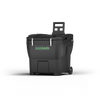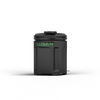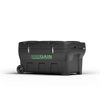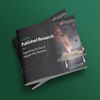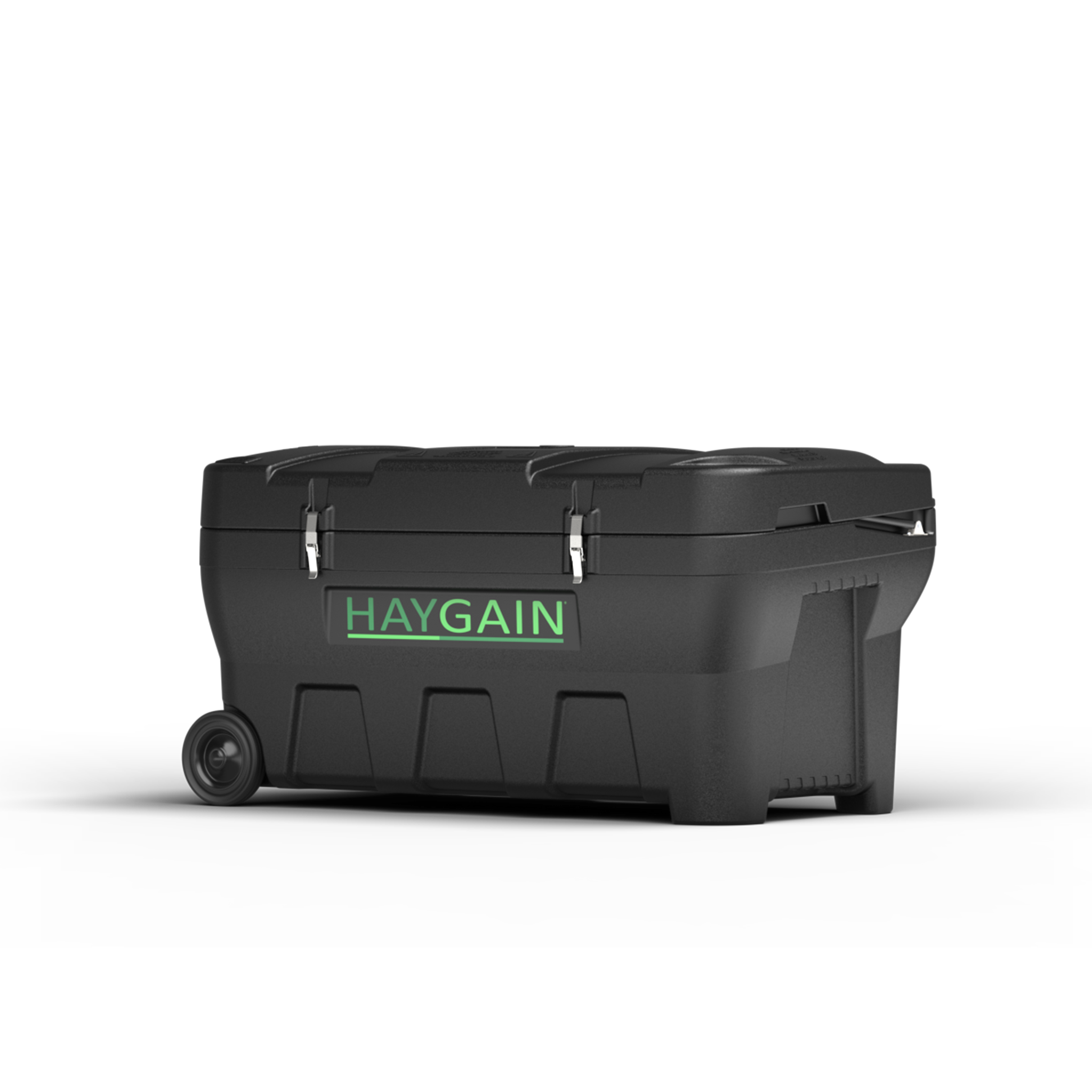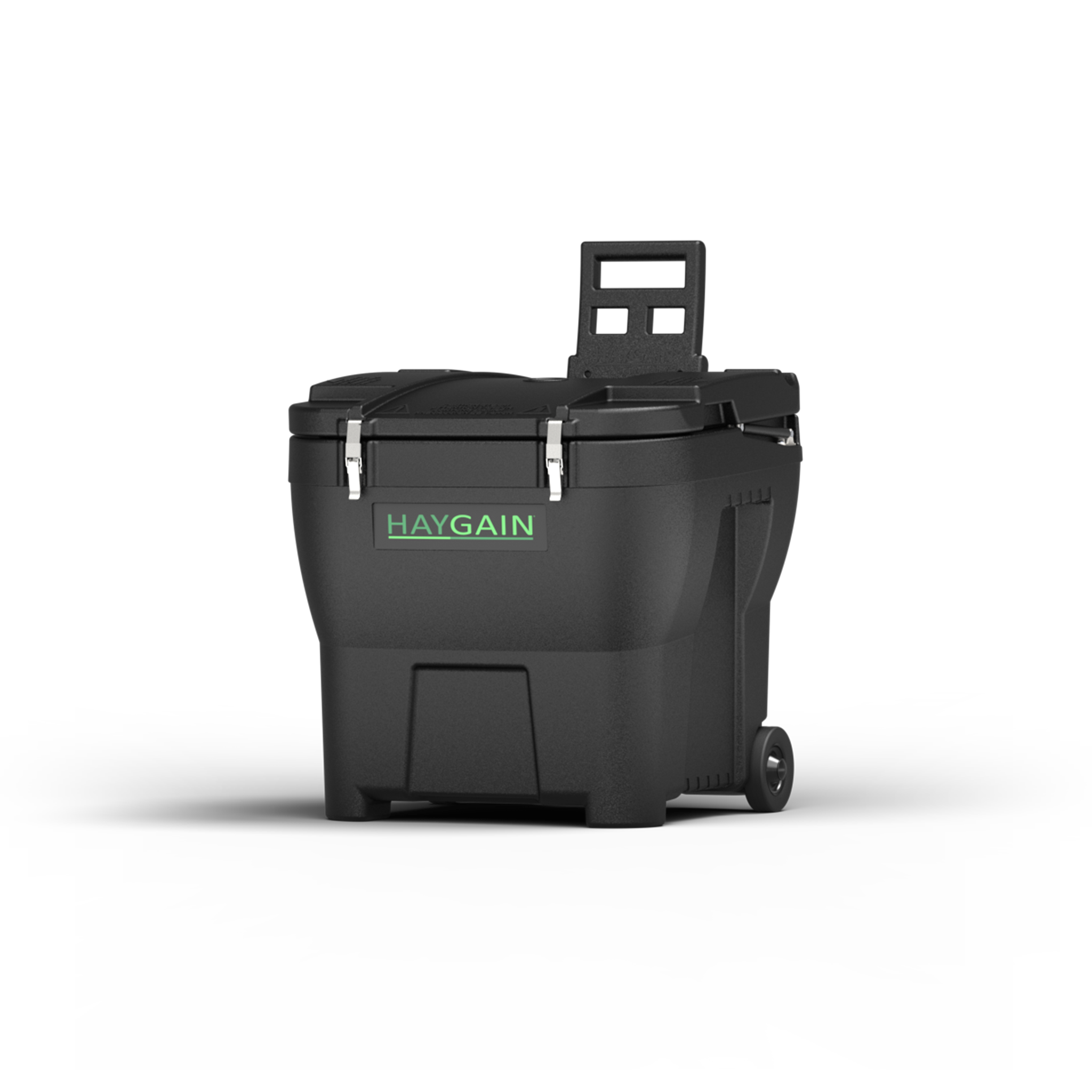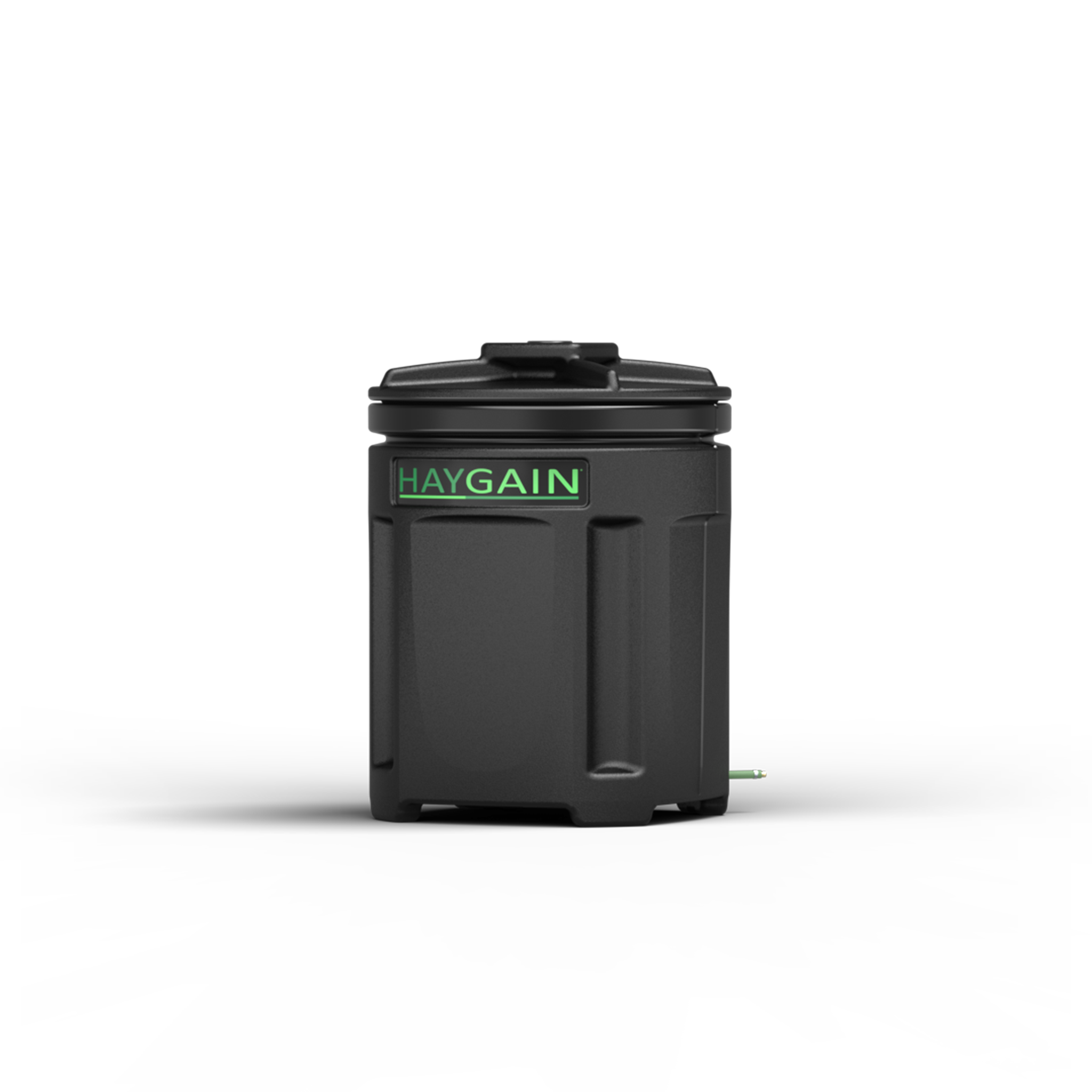Written by Equine Nutritionist Briony Witherow BSc MSc RNutr. FHEA
The Importance of Fibre
Forage should be the basis of any diet, consisting of a minimum of 1.5% of a horse’s bodyweight in dry matter (weight after the moisture has been removed) per day. 
Forage is essential to ensure the smooth functioning of the horse’s digestive tract, over two-thirds of which is dedicated to the digestion of fibre. Furthermore, for the performance horse, sufficient forage in the gut acts as a reservoir for fluid and electrolytes, helping to sustain performance. As a trickle-feeder, the key to satisfying the digestive system’s need for fibre not only lies in absolute quantity but also in maximising ‘chew-time’ and therefore how long the forage ration lasts. The mechanisms behind a lot of commonly encountered problems in performance horses (e.g. gastric ulcers and colic) are thought to, in part at least, stem from an inability to maintain this balance between sufficient provision and maximising chew time.
Not only is forage vitally important to maintain digestive function, it also provides essential nutrients. The nutrients which forage provides should never be discounted. In fact, the more savvy we are about sourcing our forage, the less we may have to rely on concentrate feeds.
When considering the longevity of our horse’s career, we not only need to consider maintaining a well-functioning digestive system (including dental health), but also to maintain a healthy respiratory tract – this can be aided by sensible choice and management of the forage ration.
Forage requires around four times as many chews as the equivalent weight of concentrate feed, and takes up to four times longer to consume, resulting in increased saliva production and more time occupied. Horses only produce saliva while chewing, therefore a greater chew rate results in more saliva to buffer gastric fluids. A greater chew rate (and feeding from the floor) is also thought to help with even wearing of the teeth. This impact is not only physiological but psychological. Provision of ample forage and/or managing this to extend chew time also facilitates the horse’s innate need to chew.
While traditionally haylage has been the forage of choice for the performance horse, typically being more digestible (therefore providing greater nutrients) and lower in dust, technologies now available have levelled the playing field. With the advent of steaming, the hygienic quality of hay can now be much improved, putting it firmly back on the menu for our performance horses. It is worth noting that a clean forage (one that is low in respirable particles) is of the upmost importance when considering any horse, however the longevity of the performance horse in particular relies upon this. Both hay and haylage can contain respirable particles which can be greatly reduced by using a high temperature steamer.
horse, typically being more digestible (therefore providing greater nutrients) and lower in dust, technologies now available have levelled the playing field. With the advent of steaming, the hygienic quality of hay can now be much improved, putting it firmly back on the menu for our performance horses. It is worth noting that a clean forage (one that is low in respirable particles) is of the upmost importance when considering any horse, however the longevity of the performance horse in particular relies upon this. Both hay and haylage can contain respirable particles which can be greatly reduced by using a high temperature steamer.
The Reality For Some
Although the benefit of ample forage is clear, for some, the unfortunate reality is that the forage ration is often restricted and in many cases turnout minimal. Subsequently, reliance on conserved forage (hay/haylage) is increased and the importance of getting the provision right amplified.
For some, this restriction may be in part due to concerns about gut fill and associated bodyweight limiting performance. However, others may be just down to poor forage selection, which is at odds with the individual horse’s requirements.
Concerns about the additional weight from gut fill is understandable (the horse having a digestive capacity of around 100-litres), hence why short-term restriction in racehorses before a race can be beneficial. However, for most performance horses, restricting forage quantity for the purposes of reducing performance weight is unnecessary. However, feeding good quality forage will necessitate less water uptake and potentially reside for a shorter period in the gut- taking us back to careful selection of quality forage for our performance horses in the first instance.
Another common situation where we can find forage being underfed is where performance horses are fed haylage. It is often mistakenly thought that horses should be fed less haylage than hay. Yes, haylage may well be more digestible than hay (not always the case) BUT crucially it also has a much higher water (moisture) content, essentially diluting these nutrients. As such, haylage may need to be fed at rates up to 1 ½ times that of hay. Underfeeding haylage can lead to chronic digestive issues resulting from simply not meeting minimum fibre requirements, ranging from chronic loose droppings to bouts of colic. If you are unsure of how much to feed, contact a nutritionist.
Where forage is underfed this not only increases the risk of physical damage to the digestive tract and discomfort for our horses, but is also likely to have behavioural consequences.
Dealing with a restricted ration?
Serious creativity is required when trying to maximise chew time for a horse on a restricted ration. When tackling this challenge, it is often best to arm yourself with various tools and strategies. Firstly, selecting an appropriate forage which suits your horse is key. If feeding a good doer dressage horse for example, a top quality first-cut ryegrass haylage, is unlikely to be most suitable. A later cut forage in this situation would afford a much better chance of successful forage management.
Next, I would recommend using a combination of tactics to extend chew time – while it may take you almost as long to organise this as it takes him to eat it, it will be worth it in the long run! Consider how the horse has evolved to feed, while he would spend a good amount of time grazing at ground level, he would also browse roughages at higher levels. Trying to reproduce this in the stable may not only help to enrich his environment and occupy more time, but also in doing so, reduce the risk of unnecessary repetitive movements and the potential for increased muscle tension. If you are striving for long and low when riding and then presenting forage in a form which may create tension in the head and neck, this may be at odds with what you are trying to achieve. Presenting forage in a range of ways which promotes various feeding positions may help to negate some musculoskeletal concerns as well as keeping things interesting!
Common Challenges Facing the Performance Horse
Reduced Forage Intake
For those that either consume less forage while away from “home” or are simply not ‘big’ forage eaters full-stop, we can implement management practices to potentially improve upon this. Firstly, never just assume that because you are providing ad lib forage your horse is getting enough. Weigh what you put in and take out over the course of a few weeks (with the same management) and take an average of forage intake. This will give you a basis to start from if you suspect that intake is reduced when competing away. If intake is low - most performance horses in upwards of moderate work may have total intakes of 2-2.5% bodyweight including concentrate feed - consider the type of forage. Are you feeding a very wet haylage which therefore requires much larger volumes to be fed? Might he be better off with a good quality hay in smaller volumes? Also consider palatability. In most studies haylage tends to be of higher preference to hay cut from the same grass crop. However, palatability of both hay and haylage can be improved by steaming.
There is also evidence to suggest that providing a selection of forages (buffet style!) can help to encourage natural foraging behaviours, and in doing so potentially increase overall intake. This buffet can include various forms of long fibre (hay/haylage), short fibre (chops/chaffs) and often beet-based products (such as Fibre-Beet and Alfa-Beet). Many of these alternative fibre sources can be used as partial forage replacement and therefore can be invaluable for the performance horse if intake of conventional forages is reduced when competing away.
For those who choose not to eat while travelling, ensure regular stops (at least every 2 hours) to give them a chance to eat. If they refuse to consume long stem fibre (hay/haylage), high fibre feeds such as chaffs and beets can be provided at these stops.
For horses that have reduced forage intake when competing away or travelling, ensure that additional fibre sources are introduced to the diet well in advance (14 days minimum) so that they may be used in larger quantities when travelling or away.
Reduced Water Intake
Another common problem is reduced water intake while travelling, competing or staying away. You are, however, likely to be more aware of this if you know what your horse’s typical intake is under routine management. As with forage intake, I would recommend getting a rough idea of your horse’s typical water intake as part of knowing your horse’s normal signs of health. 
Many horses can dislike the taste of ‘foreign water’ (water that tastes different to what they may be used to at home). For shorter journeys or trips away, take water from home with you if you can. However, this is not always possible. In these situations, it can be useful to adapt your horse to drinking mildly flavoured water (adding a small amount of apple juice for example), this can help mask the taste of different water sources, and in doing so, help to maintain water intake. Where possible, providing water in buckets instead of automatic drinkers is best, as intake can be better monitored.
Alongside promoting general water intake, you can increase intake (albeit by smaller margins) by using feeds with a high moisture content. For example, haylage or soaked/steamed hay instead of dry and using soaked beet products (as mentioned before) which can also boost fibre intake.
Top tips for Managing Forage on the go
Know your horse! Part of managing the performance horse is being able to identify where small gains in performance may be sought. Knowing your horse and his typical forage and water intake could make all the difference, if it allows you to identify and solve problems when away from home
Try and maintain consistency – where possible take forage with you. Where this is not possible, take as much as you can to allow for a reasonable change over when you arrive.
Preparation is key- establish whether forage/water intake is likely to be a problem for your horse ahead of time. That way, you can make some small adjustments to the diet to enable you to cope with these challenges. Ensure any new feeds that you may need to use have been introduced well ahead of time, maintaining a small amount in the daily ration means that the digestive system should be adapted to this product should amounts be increased when needed (still aim to make these increases gradual where possible).
For long journeys (more than 3-4 hours) reducing hard feed before and during is recommended. On long trips, replacing any scheduled feed during the journey to a soaked high fibre product such as Alfa-Beet or Fibre-Beet can help to promote digestive health whilst keeping a routine.
Goodwin, D., Davidson, H. P., and Harris, P. (2007) Responses of horses offered a choice between stables containing single or multiple forages, The Veterinary Record, 160 (16): 548-551
Goodwin, D., Davison, H.P., and Harris, P. (2002) Foraging enrichment for stabled horses: effects on behaviour and selection, Equine Veterinary Journal, 34 (7): 686-691
Harris, P.A., Ellis, A.D., Fradinho, M.J., Jansson, A., Julliand, V., Luthersson, N., Santos, A.S., Vervuert, I. (2017) Review: Feeding conserved forage to horses: recent advances and recommendations. Animal: An International Journal of Animal Science, 11 (6): 958-967
Muller, CE; Uden, P. 2007. Preference of horses for grass conserved as hay, haylage or silage. Animal feed science and technology, 132(1-2): 66-78.
Speaight, E., Routledge, N., Charlton, S., and Cunliffe, C. (2016) A preliminary study on the effects of head and neck position during feeding on the alignment of the cervical vertebrae in horses. Journal of Veterinary Behaviour: Clinical Applications and Research, 15: 93
